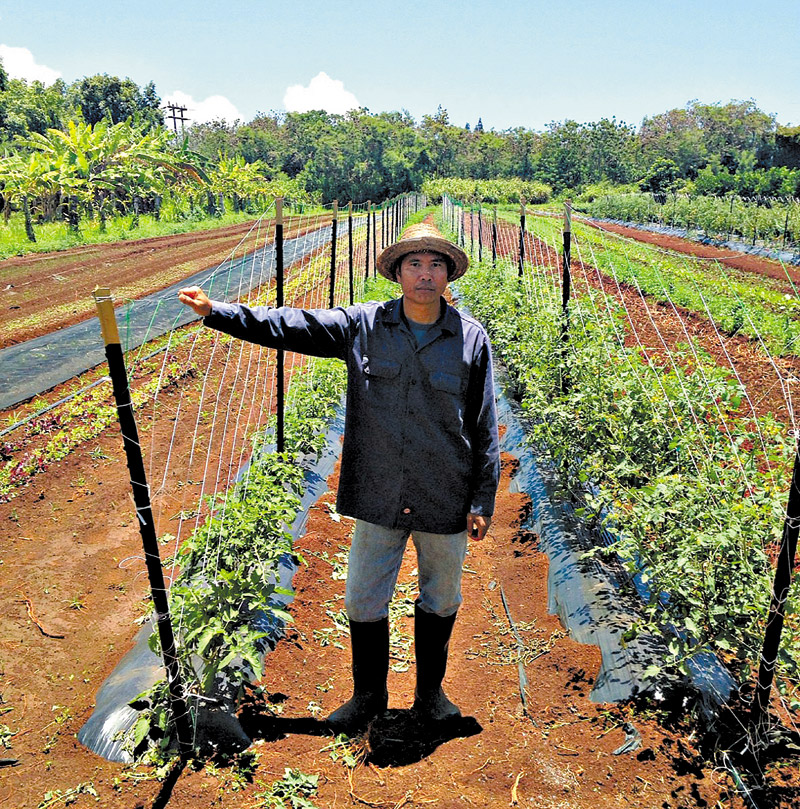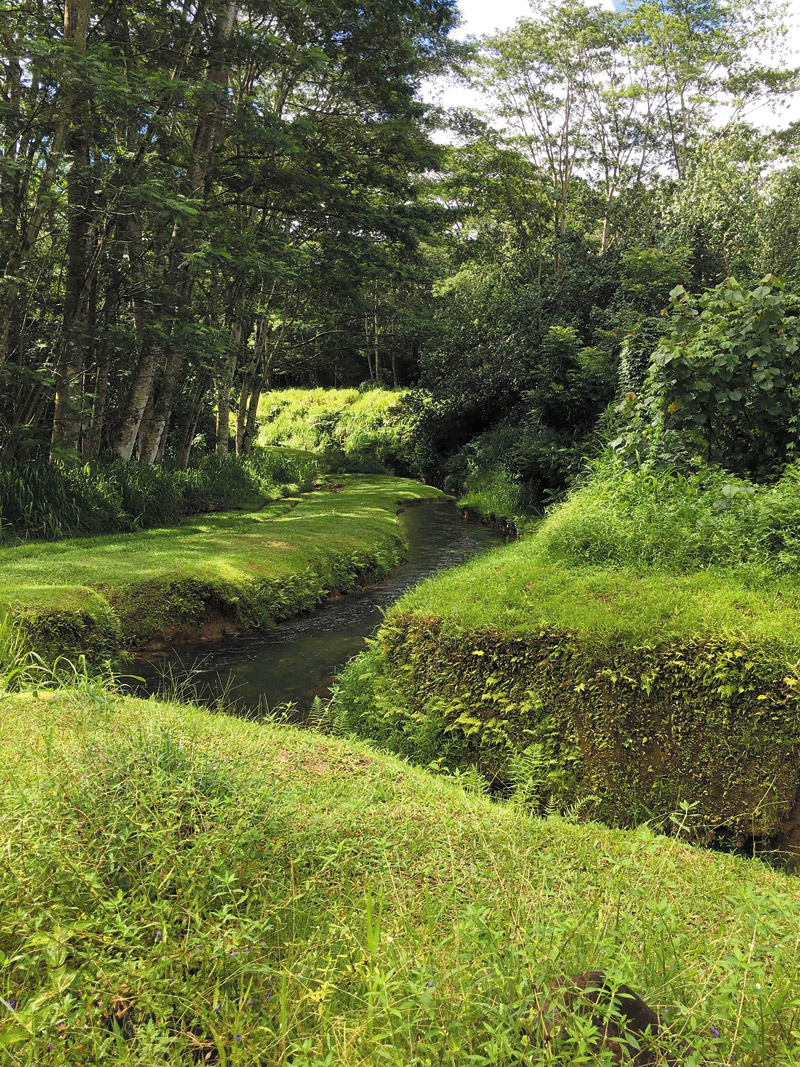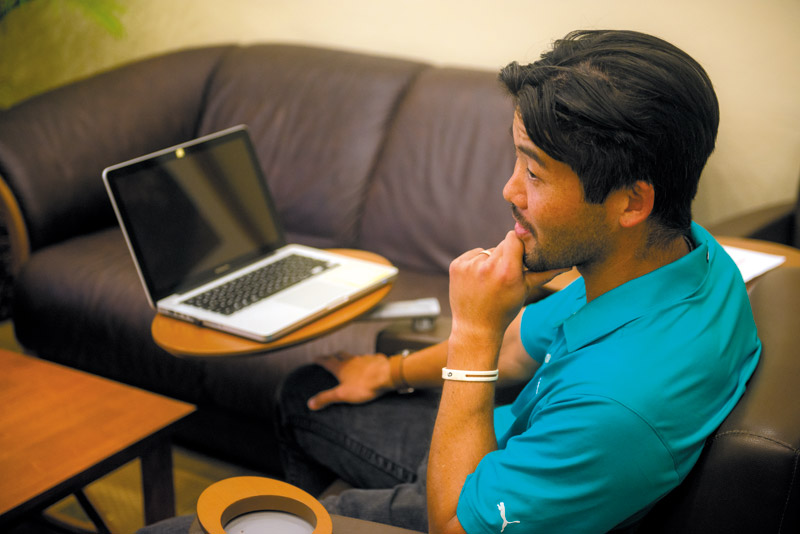Anatomy Of Agriculture

Nophodon Seechachet is one of some 100 tenants who lease land from Grove Farm. PHOTO COURTESY GROVE FARM
Grove Farm’s mission extends past that of food cultivation to include resource sustainability, responsible stewardship and providing workforce residences for Kaua‘i’s farmers.
Agriculture isn’t for the faint of heart. Cultivators and ranchers exert tremendous levels of dedication on a daily basis — something Grove Farm and its employees appreciate.
“You find every farmer is unique in their own way,” says Todd Ozaki, Grove Farm project specialist. “They’re very hard workers.”
Grove Farm, a former plantation company, focuses on creating sustainable communities. In doing so, it provides land and water resources to some 100 agricultural tenants. In fact, Grove Farm is one of the largest private landowners on the island with around 38,000 acres — more than half of which are allotted to agriculture. This allows the company to host farmers and ranchers who tend to local food sources like fruits, vegetables, honey and cattle, which speaks to the importance of locally grown provisions.
“If something were to happen and we’re cut off from the supply, we’re not left out,” explains Ozaki.

Grove Farm provides water throughout the island via complex irrigation systems that require regular maintenance. MATT FEESER PHOTO
Not to mention, locally resourced food benefits the island economically and has a multiplier effect.
“When you buy local or eat local, you’re spending your money here and it multiplies and exchanges hands several times,” says Ozaki.
The hard-working individuals who lease Grove Farm land have companies that range from smallto large-scale operations within 5 to some 40 acres of land, selling their products at island markets and to restaurants. Farmers Sakda Meephol, Nophodon Seechachet, Elmer Viernes, and beekeeper Chris Kauwe of Honi Honi Honey, are just some of the many examples of Grove Farm lessees who benefit. Their crops can be found at grocery stores, farmers markets and eateries around the island.
Another reason, aside from land, that agricultural industry entrepreneurs seek out Grove Farm is the water it provides — at reasonable rates, according to Ozaki.

Grove Farm, originally established as a plantation company in the mid-1800s, has an office located in Puhi.
MATT FEESER PHOTOS
“You cannot have food and cattle without water; it’s a very important part of the chain,” adds Casey Watabu, another project specialist for Grove Farm.
Grove Farm provides water to its tenants through complex irrigation systems inherited from the plantation era, including six reservoirs from Hanamā‘ulu to Kōloa. Kapaia reservoir even has a surface water treatment plant that provides potable drinking water to 15,000 residents from Kapa‘a to Līhu‘e. And while Grove Farm’s water system continues to age and requires regular maintenance, the goal is to provide irrigation for “another 100 years,” says Watabu.
“The upkeep is tough, but that’s one of the things we pride ourselves on is making sure it remains operational,” he adds. The ultimate mission, therefore, is to create opportunities for people to make a living off the land.
The farm was initially established during the mid-1800s and was made successful by George N. Wilcox. O‘ahu native and AOL cofounder Stephen Case then purchased the land in 2000.
Grove Farm currently is home to 14 employees — most of whom were born and raised on the island — and recently completed a water project in the Kapaia reservoir to address its mission for sustainable irrigation. A tunnel that filtered water into the basin, part of the 18,000 acres of the former Līhu‘e plantation land that Case purchased in 2001, was collapsing and in need of a new pipe. The installation cost around $1.1 million.

Todd Ozaki, Grove Farm project specialist, listens to one of his colleagues speak during a recent meeting.
“It ensures that water will flow,” says Watabu. A running water system like the one Grove Farm provides is a choice, rather than a requirement, but is essential for the farm’s nod to superior irrigation.
Other projects include providing workforce housing to residents in areas like Puhi and Kōloa.
“Obviously, this is something that’s very important,” says David Hinazumi, Grove Farm vice president.
Newer subdivisions like Pīkake in Puhi, which started selling around 100 house lots about a decade ago, are mostly occupied by Kaua‘i residents.
“It’s family and friends that we see around the neighborhoods,” says Hinazumi. “And it’s growing into a community of people who grew up here and get to stay home and raise their families.”
Other Grove Farm undertakings throughout the years include donating more than 200 acres to Kaua‘i Community College, 40 to Island School, 12 acres to Kaua‘i Philippine Cultural Center and a 5-acre parcel to Kaua‘i County for its adolescent
treatment and healing center on the same road that leads to Wailua Falls.
One of the most rewarding aspects of these many goings-on for Watabu is witnessing firsthand the benefits of these projects. He especially enjoys when farmers visit the office in Puhi and share fresh produce harvested directly from Grove Farm land.
“It can put a smile on our face,” says Watabu.
Ozaki adds that these farmers also express their gratitude for having the land available for use.
“We’re doing something right for them to be so appreciative,” says Ozaki.
Visit www.grovefarm.com/grove-farm-story for more information and to learn more about the farmers.




